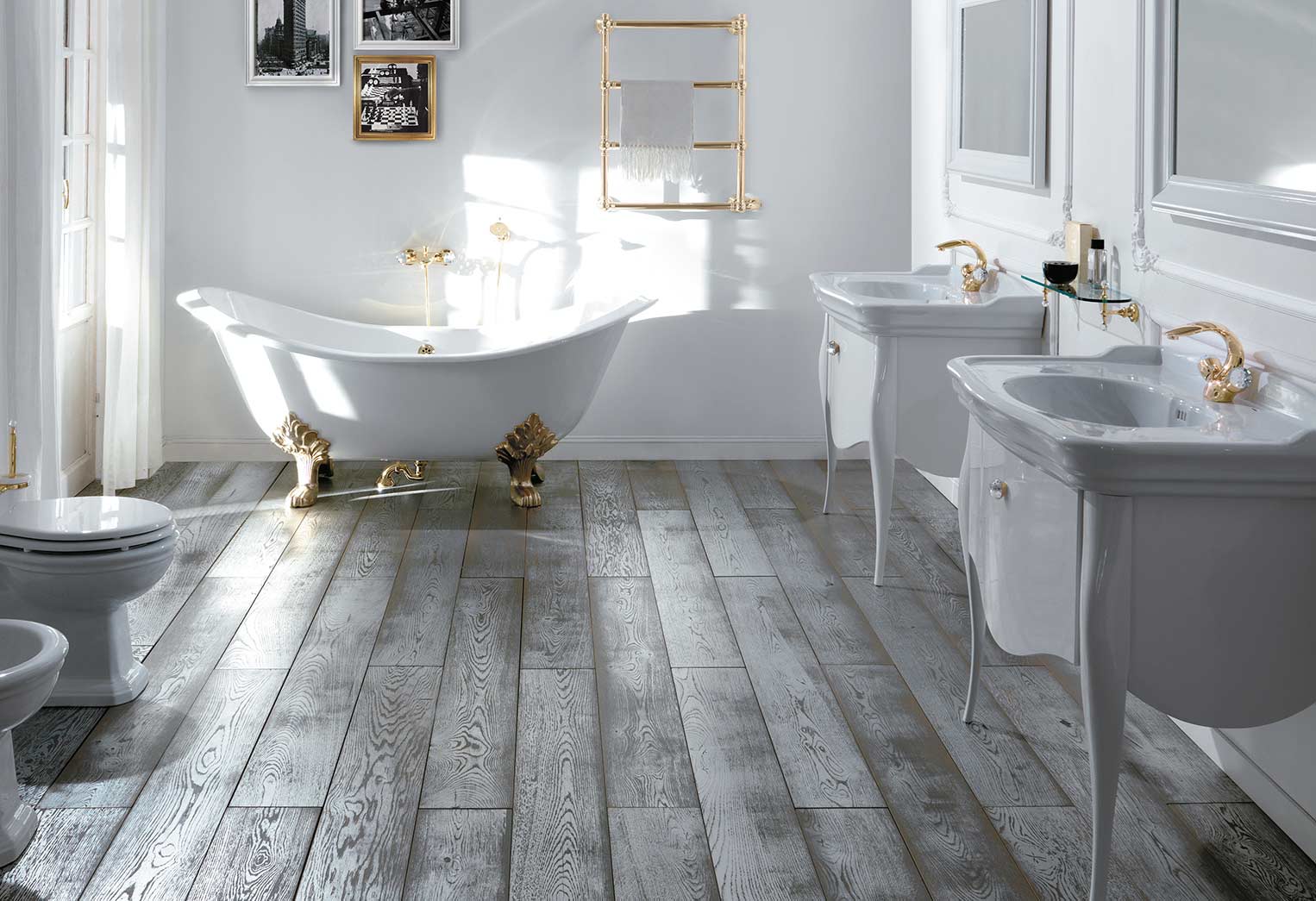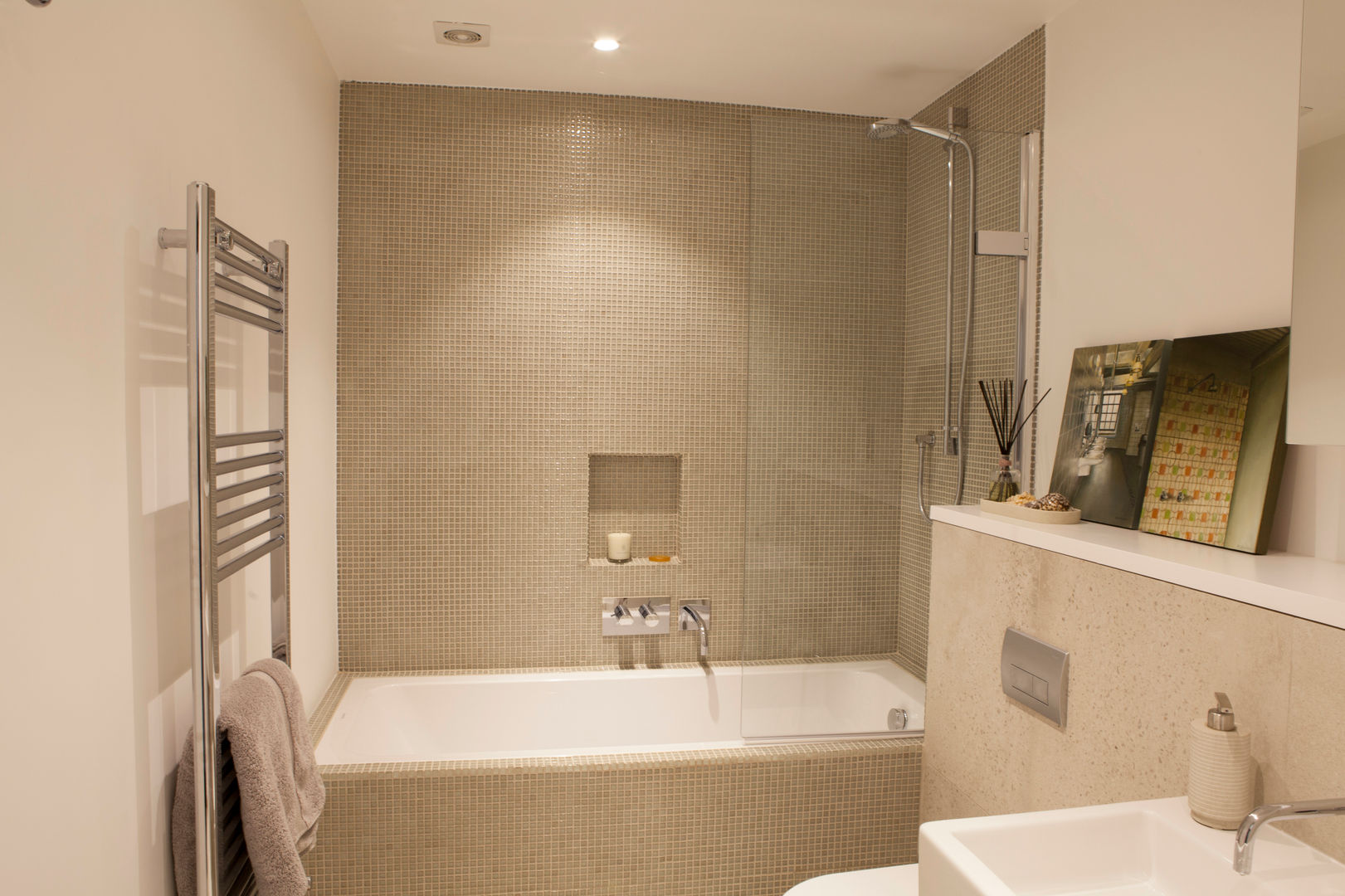The Essence of Traditional Bathroom Design: Pictures Of Traditional Style Bathrooms
Traditional bathroom design embodies timeless elegance and enduring appeal, creating spaces that are both luxurious and inviting. These bathrooms often draw inspiration from architectural styles of the past, seamlessly blending classic elements with modern functionality.
Classic Architectural Elements
Traditional bathrooms often feature classic architectural elements that contribute to their timeless charm. These elements add a sense of sophistication and depth to the space, creating a visually appealing and cohesive design.
- Wainscoting: This decorative paneling, typically extending from the floor to chair rail height, adds visual interest and architectural detail to the walls. Wainscoting can be crafted from various materials, including wood, tile, or even painted drywall, and often features intricate moldings or carvings.
- Crown Molding: This decorative trim, installed along the ceiling line, adds a touch of elegance and sophistication to the room. Crown molding can be simple or elaborate, depending on the desired aesthetic. It helps to create a sense of grandeur and draws the eye upwards, making the room feel more spacious.
- Intricate Tile Patterns: Traditional bathrooms often feature intricate tile patterns, such as herringbone, basketweave, or subway tile, which add visual interest and texture to the space. These patterns can be used on the floor, walls, or even as accents around the tub or shower.
Color Palettes
Traditional bathrooms typically employ color palettes that evoke a sense of warmth, sophistication, and tranquility. These palettes often feature a combination of warm neutrals, rich jewel tones, and muted pastels, creating a harmonious and inviting atmosphere.
- Warm Neutrals: Colors like cream, beige, ivory, and soft gray create a calming and timeless backdrop for the bathroom. These colors can be used on the walls, floors, and even the cabinetry, providing a neutral canvas for other design elements.
- Rich Jewel Tones: Deep blues, emeralds, rubies, and amethysts add a touch of luxury and sophistication to the bathroom. These colors can be used as accents on the walls, in the tile patterns, or in the accessories, creating a statement without overwhelming the space.
- Muted Pastels: Soft pinks, blues, and greens can add a touch of femininity and whimsy to the bathroom. These colors can be used on the walls, in the linens, or in the accessories, creating a calming and inviting atmosphere.
Key Elements of Traditional Bathroom Decor

Traditional bathroom decor embodies a timeless elegance, drawing inspiration from bygone eras. This style prioritizes classic elements that create a sense of sophistication and enduring charm. By understanding the key elements, you can recreate the essence of a traditional bathroom in your own space.
Creating a Traditional Bathroom Design
To achieve a traditional bathroom design, you can incorporate several key elements. The use of freestanding tubs and pedestal sinks adds a touch of vintage elegance. Freestanding tubs often feature clawfoot designs, offering a classic and luxurious touch. Pedestal sinks, with their exposed plumbing and graceful curves, create a sense of refinement. Ornate fixtures, such as faucets with intricate detailing, add a touch of grandeur and sophistication. These fixtures can be found in various finishes, including polished brass, nickel, and chrome, allowing you to personalize the look based on your preferences.
Traditional Bathroom Décor
Traditional bathroom decor often features vintage mirrors, antique lighting, and decorative towels. Vintage mirrors with ornate frames add a touch of history and elegance to the space. Antique lighting fixtures, such as chandeliers or sconces with crystal accents, create a warm and inviting ambiance. Decorative towels, often featuring intricate patterns or embroidered details, enhance the overall aesthetic appeal of the bathroom.
Traditional bathroom decor often features vintage mirrors, antique lighting, and decorative towels.
Traditional Bathroom Furniture
Traditional bathroom furniture often features intricate craftsmanship and elegant designs. Vanity cabinets with ornate carvings and detailed hardware add a touch of sophistication. Storage solutions, such as antique chests or vintage wicker baskets, provide both functionality and visual appeal. Accent pieces, such as decorative trays, antique candlesticks, and framed botanical prints, complete the traditional aesthetic, adding a touch of personality and charm.
Traditional bathroom furniture often features intricate craftsmanship and elegant designs.
Modern Interpretations of Traditional Style

The beauty of traditional bathroom design lies in its timeless elegance and enduring appeal. However, incorporating modern elements can breathe new life into this classic aesthetic, creating a space that feels both familiar and fresh. This fusion of old and new results in a bathroom that is not only stylish but also highly functional, reflecting the contemporary homeowner’s desire for a blend of comfort and sophistication.
Blending Modern Elements with Traditional Aesthetics
Modern interpretations of traditional bathroom design are about finding a harmonious balance between classic and contemporary elements. This involves carefully selecting modern fixtures, materials, and furniture that complement the traditional features of the space without compromising its essence.
- Sleek and Minimalist Fixtures: While traditional bathrooms often feature ornate faucets and fixtures, modern interpretations embrace minimalist designs. Sleek, chrome faucets with clean lines can add a touch of contemporary sophistication to a traditional vanity. Similarly, modern showerheads with multiple spray settings offer both functionality and a contemporary aesthetic.
- Contemporary Lighting: Traditional bathrooms often feature ornate chandeliers or sconces. However, modern interpretations may incorporate minimalist pendant lights or recessed lighting to create a more contemporary feel. These lighting choices can highlight architectural features and create a sense of space.
- Bold Color Choices: Traditional bathrooms typically feature muted colors and patterns. However, modern interpretations can incorporate bolder color choices, such as deep blues, emerald greens, or rich browns. These colors can add a touch of drama and personality to the space.
The Use of Natural Materials
Natural materials play a key role in both traditional and modern bathroom design. Their inherent beauty and durability make them ideal for creating a timeless and elegant space.
- Wood: Wood is a classic material used in traditional bathrooms. In modern interpretations, wood can be used in a more contemporary way. For instance, a sleek, modern vanity made of walnut or oak can complement the traditional elements of the space.
- Stone: Stone is another natural material that is often used in traditional bathrooms. In modern interpretations, stone can be used to create a more minimalist and contemporary look. For example, a large, rectangular shower stall made of natural stone can add a touch of modern sophistication to the space.
- Marble: Marble is a luxurious material that is often used in traditional bathrooms. In modern interpretations, marble can be used in a more contemporary way. For instance, a marble countertop with a waterfall edge can add a touch of elegance and modernity to a traditional vanity.
Minimalist Furniture and Sleek Fixtures, Pictures of traditional style bathrooms
Modern interpretations of traditional bathroom design often feature minimalist furniture and sleek fixtures that complement the classic elements of the space without compromising its essence.
- Minimalist Vanity: A minimalist vanity with clean lines and simple hardware can add a touch of modern sophistication to a traditional bathroom. This type of vanity can be made from a variety of materials, such as wood, stone, or metal.
- Sleek Shower Enclosure: A sleek, frameless shower enclosure can add a touch of modern elegance to a traditional bathroom. This type of enclosure creates a sense of openness and spaciousness.
- Minimalist Accessories: Modern interpretations of traditional bathroom design often feature minimalist accessories, such as soap dishes, toothbrush holders, and towel bars. These accessories can be made from a variety of materials, such as metal, glass, or ceramic.
